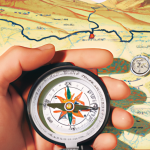
Hydroelectric Power for Beginners
In a world where the stability of our energy sources is constantly being challenged, it is more important than ever to explore alternative methods of generating power. One such method is hydroelectric power, which harnesses the force of flowing water to generate electricity. Not only is hydroelectric power a reliable and renewable energy source, but it also offers the opportunity for self-reliance and a sense of security in an uncertain future.
How does hydroelectric power work?
The basic principle behind hydroelectric power is the conversion of kinetic energy from flowing water into electrical energy. This process requires several key components:
- A dam or diversion structure to control the flow of water
- A reservoir or intake to collect and store water
- A penstock or conduit to direct the flowing water
- A turbine, which is turned by the force of the flowing water
- A generator, which converts the mechanical energy from the turbine into electrical energy
When water is released from the reservoir or diverted through a dam, it flows down the penstock and strikes the turbine’s blades, causing it to spin. As the turbine spins, it transfers its mechanical energy to the generator, which converts it into usable electrical energy. This electricity can then be used to power homes, farms, or other electrical devices.
The potential of small-scale hydropower systems
While large-scale hydroelectric power plants are often associated with massive dams and substantial infrastructure, small-scale hydropower systems offer a more accessible and scalable solution for individual homesteaders and survivalists. These smaller systems can be installed on natural streams or even man-made water channels, providing a reliable and sustainable source of electricity even in remote areas.
Small-scale hydropower systems have numerous benefits:
- Reliability: Unlike solar or wind power, hydroelectric power is not dependent on weather conditions. As long as water is flowing, electricity can be generated consistently.
- Independence: By harnessing the power of flowing water on your property, you can become less reliant on external energy providers. This self-reliance can provide peace of mind and increased resilience in the face of potential energy shortages or disruptions.
- Cost savings: Once a hydropower system is installed, the ongoing operational costs are minimal compared to traditional electricity sources. Over time, this can lead to significant savings on energy bills.
- Environmental impact: Hydroelectric power is a clean and renewable energy source that produces no greenhouse gas emissions or air pollutants. By utilizing this method, you can reduce your carbon footprint and contribute to a more sustainable future.
Conclusion
As we confront the uncertainties of the modern world, it is essential to seek out alternative sources of energy that can provide resilience and self-reliance. Hydroelectric power offers a practical solution for those looking to generate their own electricity and reduce dependency on external energy sources.
Whether you are a homesteader, survivalist, or simply someone interested in sustainable living, exploring the potential of small-scale hydropower systems is a worthwhile endeavor. By harnessing the power of flowing water, you can secure a stable source of energy for yourself and your family, even in the face of an uncertain future.



GIPHY App Key not set. Please check settings